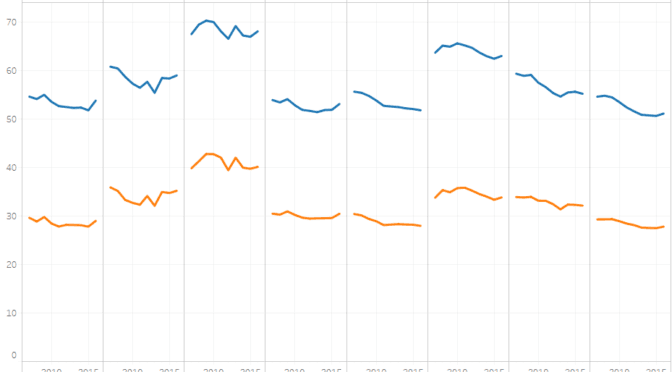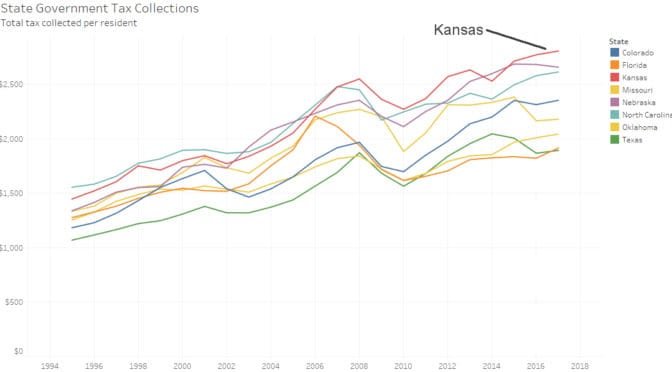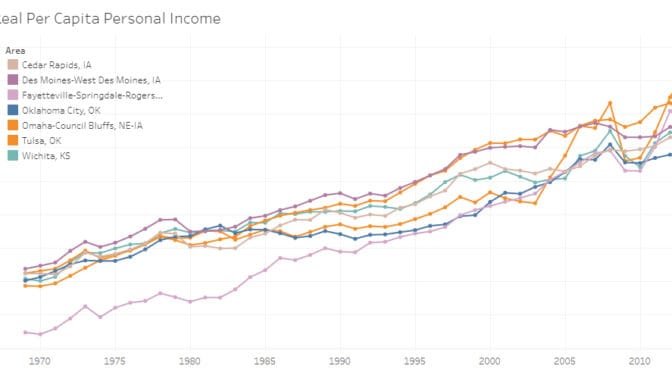Tag: Economics
-

The Wichita Mayor on employment
On a televised call-in show, Wichita Mayor Jeff Longwell is proud of the performance of the city in growing jobs.
-

Kansas GDP growth slows
In the first quarter of 2018, the Kansas economy grew at the annual rate of 0.5 percent in real terms, slowing from the previous quarter.
-

Kansas and Wichita jobs, June 2018
For June 2018, more jobs in Kansas, and a nearly unchanged labor force. Wichita jobs also rose.
-

Kansas candidate briefings
Recently Kansas Policy Institute, along with Americans for Prosperity and Kansas Chamber of Commerce, held a series of briefings for candidates for the Kansas Legislature.
-

Kansas government employees
Kansas has a lot of government employees when compared to other states, and especially so in education.
-

Kansas tax collections
If Kansas government doesn’t have enough money to meet spending requests, it’s not for the lack of collecting taxes.
-

Wichita jobs up
Wichita employment trends are positive for three consecutive months.
-

Wichita and Midwest income
A look at income in Wichita compared to other Midwest cities.
-

Kansas personal income, first quarter 2018
Kansas personal income rose at the annual rate of 4.2 percent in the first quarter of 2018, compared to the previous quarter.
-

Airport traffic statistics, 2017
Airport traffic data presented in an interactive visualization, updated through 2017.
-

Kansas employment, May 2018
For May 2018, more jobs in Kansas, and a slightly higher labor force.
-

Sedgwick County jobs
Sedgwick County had fewer jobs in 2017 than in 2016.